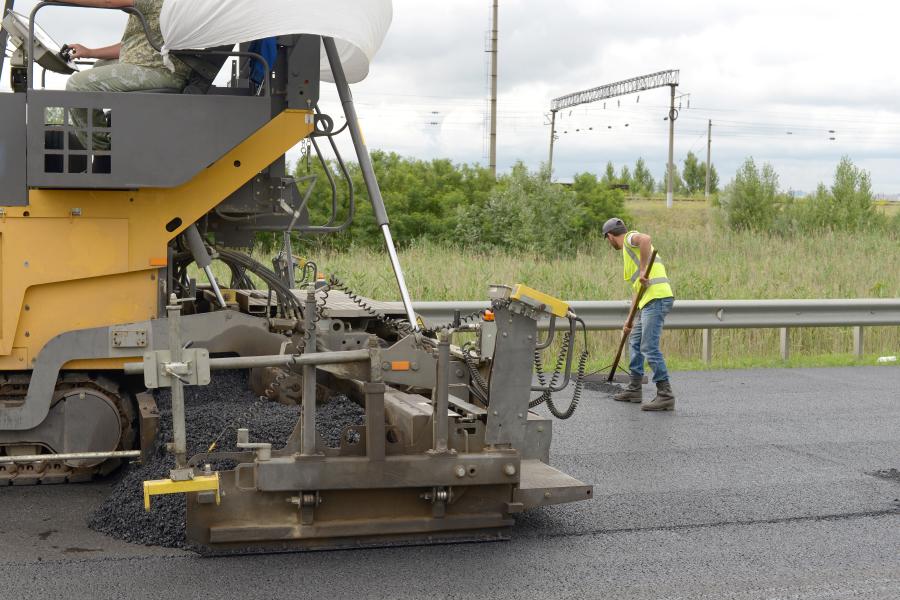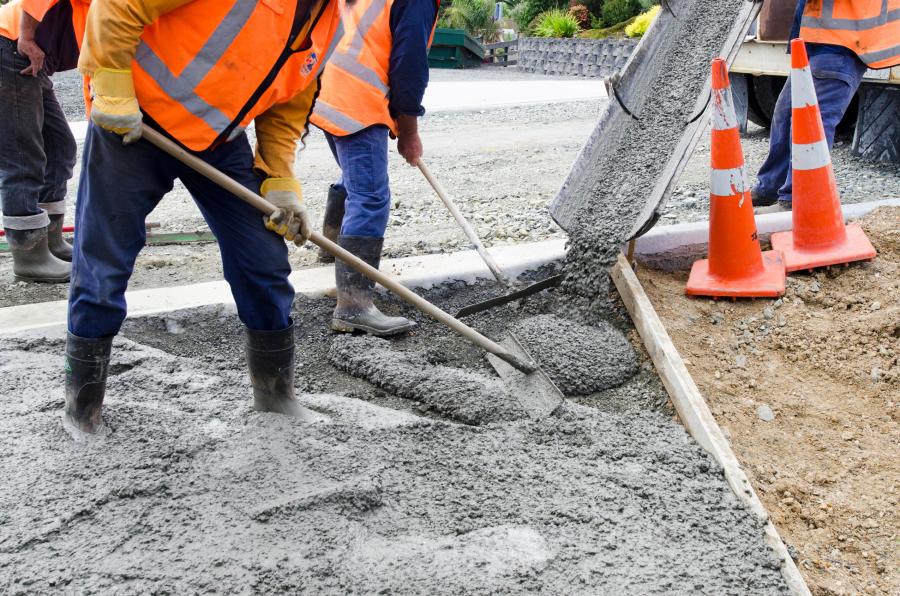OSHA is included in the Department of Labor’s increased penalty costs for employer violations.
The Department of Labor opened the year with an increase in the cost of penalties for employer violations. This means not only the federal Mine Safety and Health Administration, but the Employee Benefits Security Administration, Wage and Hour Division and Office of Workers' Compensation Programs are all under the fee-hike umbrella. So is OSHA.
The Occupational Safety and Health Administration's maximum penalty increases include more than $15,000 per violation for serious, other-than-serious and posting requirement violations.
The Federal Penalties Inflation Adjustment Act Improvements Act of 2015 dictates that all federal agencies must increase their monetary penalties annually in line with the rate of inflation.
However, the new rules are "intended to be a targeted strategy," said Doug Parker, OSHA assistant secretary of labor.
They're written especially for "those employers who repeatedly choose to put profits before their employees' safety, health and well-being."
Targeting Offenders
In fact, OSHA regional administrators and area office directors now have the authority to cite certain violations as "instance-by-instance citations."
They can do so for cases where the agency identifies "high-gravity" serious violations of OSHA standards supports a citation for each instance of non-compliance.
This includes lockout/tagout, machine guarding, permit-required confined space, respiratory protection, falls and trenching.
Cases with other-than-serious violations specific to recordkeeping also fall under the discretionary authority.
According to OSHA, the change is intended to ensure agency personnel are applying the full authority of the OSH Act where increased citations are needed to discourage non-compliance.
"The new guidance covers enforcement activity in general industry, agriculture, maritime and construction industries, and becomes effective 60 days from Jan. 26, 2023," said OSHA.
The current policy has been in place since 1990 and applies only to egregious willful citations.
At the same time OSHA reminds regional administrators and area directors of their authority not to group violations. The staffers should instead cite violations separately to more effectively encourage employers to comply with the intent of the OSH Act.
"Smart, impactful enforcement means using all the tools available to us when an employer ‘doesn't get it' and will respond to only additional deterrence in the form of increased citations and penalties," said Parker. "Employers who callously view injured or sickened workers simply as a cost of doing business will face more serious consequences."
Numbers Are Going Up
OSHA's maximum penalty increases are:
- $15,625, up from $14,502, per violation for serious, other-than-serious and posting requirement violations;
- $15,625, up from $14,502, per day for failure to abate beyond the abatement date;
- $156,259, up from $145,027, for willful or repeated violations.
The minimum penalty for a willful violation is now $11,162, an increase from $10,360.
In January, the Occupational Safety and Health Administration announced a 5 percent increase in the civil penalties assessed for violations of its regulations.
The Connecticut Business and Industry Association (CBIA) reports that the number of OSHA inspectors increased by 19 percent. The association concluded that the increase in staff "raises the possibility of onsite inspections."
Before the COVID pandemic, OSHA performed approximately 31,000 inspections a year, according to Chris Mayne, GZA GeoEnvironmental, Norwood, Conn.
Mayne, GZA health and safety manager, told CBIA that that number dropped to approximately 24,000 inspections in 2021. He anticipates as society adjusts to a post-COVID and with the increase in staff OSHA will at least return to its pre-pandemic inspection levels.
"I have seen companies become more safety conscious over the years with safety becoming integrated into the fabric of company culture," he said.
These companies are spending more resources on safety-related issues to prevent illness and injuries from occurring in the workplace, and consequently, to reduce the likelihood of citations and fines, he said.
"Having good safety management programs in place can help identify areas of non-compliance or risk and drive solutions to address these areas of concern."
Impact On Contractors
It helps a construction contractor tremendously to know the difference between an OSHA violation and a citation.
A violation occurs when a company or employee willingly or unknowingly ignores potential and real safety hazards. According to trainers at Safety by Design, a violation does not always mean an incident occurred; it can also happen during an OSHA inspection.
"Depending on the severity of the infraction, the company can receive a citation or fine," noted the safety consulting firm.
Some OSHA violations do not put employees at risk, and as a result, instead of issuing a fine, the agency gives the company a citation.
"Similar to a warning traffic ticket, a citation lets the business know there is a violation to resolve," said the safety consultant. "It will also include a date when the safety issue needs to be fixed."
Only repeat OSHA citations are listed on a company's safety record, the company further explained.
"It's classified as a repeat offense when a business receives the same citation more than once in three years."
Safety by Design said with a complete list on its website, OSHA has made it easy for employees, managers and business owners to look up various violations.
The firm suggests that regular safety audits and inspections performed by third-party safety consulting companies can help improve workplace safety. These audits also can help reduce the likelihood of OSHA violations and citations.
Avoiding Consequences
Understanding what an OSHA compliance safety and health officer is allowed to investigate is crucial, said training solution provider SafetySkills. It also helps to understand what employees' rights are both during and after an inspection, said the Oklahoma City, Okla., company.
"But a proper safety plan needs to start well before an inspection ever occurs," the firm added. "You should identify and eliminate as many potential hazards from your workplace as possible."
As well, contractors should implement personal protective equipment (PPE) wherever necessary.
"You also need to maintain accurate records of all injuries, illnesses and deaths and train employees on proper safety procedures for both everyday work and in an emergency."
Many employers choose to conduct practice OSHA inspections, the firm noted.
"Just like when you had drills in school, practicing an inspection means employees will be better prepared and likely more relaxed in an official inspection."
SafetySkills believes beyond onboarding, ensuring every new employee is also up-to-date on applicable safety standards could also significantly reduce the incidences of workplace injuries.
"Unfortunately, OSHA does not have one consistent standard for addressing safety training," the consultant cautioned. "Instead, if there is a specific training requirement, it is outlined in the OSHA standard itself."
The company instructs clients to keep in mind that training does not guarantee OSHA compliance.
"Training simply makes employees aware of potential safety hazards," it said, adding that maintaining proper training documentation is key.
Documentation can serve as proof that the employer took the necessary steps to avoid a violation, should an inspection come to that.
No matter what kind of hazard may be present on a job site, there is some form of PPE that can help protect affected workers. Since 1974, OSHA has developed many PPE standards covering everything from clothing and fall arrest systems to hearing and respiratory protection.
"With few exceptions," said SafetySkills, "employers are required to provide effective PPE that will protect each affected employee from any identified hazards or potential hazards at no cost to the employee."
Employers also are responsible for providing complete training on any protective equipment that may be used. This training requires instruction in how to properly put on, adjust and remove PPE, and understanding any limitations of the equipment.
It is truly up to the employees to make sure safe habits are being carried out each day, said the safety consultant.
"In the field or out on the floor, employees will likely be the first ones to see any potential issues."
By making it easy for employees to anonymously report potentially hazardous situations, employers can take the necessary corrective actions, the company said.
"It is crucial for employers to make it clear that if an employee raises a safety concern or files a complaint with OSHA, they are protected from retaliation."
Employees also should be encouraged to conduct regular safety checks of their own areas to ensure standards are being met by every worker. Putting this power into their hands rather than in the hands of management only fosters a culture of safety from the ground up, believes SafetySkills.
If You Are Cited
OSHA provides a general overview of employer rights and responsibilities following a federal OSHA inspection.
"But you should always consult your local OSHA area director for any specific questions or concerns," urged SafetySkills.
Employers have options:
- They can agree to the citation and penalty by paying the fine;
- They can request an informal conference with the OSHA area director to discuss the citation;
- They can contest part or all of the notice, including the citation, penalty and/or abatement date; and
- Finally, employers can file a petition for modification of abatement if unable to meet the given deadline.
"Regardless, you must post a copy of the OSHA citation at or near the place where each violation occurred, in order to make employees aware," said SafetySkills. "This posting must remain for three working days or until the violation is corrected, whichever is longer."
In announcing the fine increases, OSHA reiterated that the enforcement changes are tools.
These tools are meant to help deter employers from disregarding their responsibilities to protect workers. They're also meant to "ensure compliance with OSHA standards and regulations." CEG
Lucy Perry
Lucy Perry has 30 years of experience covering the U.S. construction industry. She has served as Editor of paving and lifting magazines, and has created content for many national and international construction trade publications. A native of Baton Rouge, Louisiana, she has a Journalism degree from Louisiana State University, and is an avid fan of all LSU sports. She resides in Kansas City, Missouri, with her husband, who has turned her into a major fan of the NFL Kansas City Chiefs. When she's not chasing after Lucy, their dachshund, Lucy likes to create mixed-media art.
Read more from Lucy Perry here.
Today's top stories


















